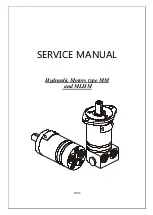
Operation and Maintenance Manual
Operating fluids and maintenance
Lubricants and operating materials
Sulfur content in %
Oil change factor (factor 2)
0 < sulfur content ≤ 0.5
“
1
” => no change on the maintenance
interval
0.5 < sulfur content ≤ 1 limited to
lubricant category 2 and 3
“
1/2
” => reduces the maintenance interval
by one half
1 < sulfur content ≤ 1.5 limited to
lubricant category 2 and 3
“
1/4
” => reduces the maintenance interval
by one quarter. The use of sulfur in the
ratio of more than 1% requires an
additional approval of the engine
manufacturer to ensure that all engine
options, the used lubricant, and the
maintenance schedule are compatible with
this very high sulfur content. Special
lubrication oil must be used => TBN > 12
MgKOH/g.
Tab. 14: Sulfur content table
Engine oil analysis
The engine oil can be monitored by means of an engine oil analysis and the
change interval can be adjusted if required.
5.2.3 Coolant
Information
Mixing different anticorrosion antifreeze agents can make the properties of the
coolant worse.
u
Do not combine different products!
u
Silicate-based and non-silicate based coolants must never be mixed; this may
damage the cooling system!
Requirements for water
Make sure that the water used meets the following requirements:
– Fully de-ionized water should be used.
– Corresponds to the 2006 WHO (World Heath Organization) guideline for
drinking water.
The cooling circuit must remain within the following parameters:
– Hardness of water < 12 dH
– pH value 6.7 to 9.0
– Chloride and sulfate < 100 mg/l
Requirements of the coolant
Use only pre-mixed cooling water of the same kind to avoid problems with the
cooling circuit.
An SI-OAT or hybrid technology with ethylene glycol is to be used as coolant, since
this technology provides the necessary cooling performance and cooling function
for engines.
Approved products:
– BASF GLYSANTIN® G40™ change interval 6 years
KD45V20 33521030001_4_1 en 2018-08-01
© 2018 by Kohler Co. All rights reserved.
43
















































